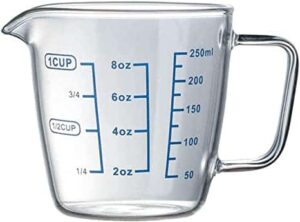Identifying Poisonous Snakes: A Comprehensive Guide
Snakes are fascinating creatures that play an important role in many ecosystems, but some species can pose a serious threat to human health due to their venomous nature. Accurately identifying whether a snake is poisonous or not is crucial for your safety and the appropriate handling of the situation. In this comprehensive guide, we’ll explore the key characteristics and behaviors that can help you determine if a snake is venomous, as well as provide guidance on what to do if you encounter a potentially dangerous snake.
Understanding Venomous Snakes
Venomous snakes are those that possess specialized venom glands and fangs capable of injecting toxic substances into their prey or perceived threats. While the majority of snake species are non-venomous, there are several families of venomous snakes found around the world, including:
- Elapidae (cobras, coral snakes, and their relatives)
- Viperidae (rattlesnakes, copperheads, and their relatives)
- Hydrophiidae (sea snakes)
- Atractaspididae (burrowing asps)
These venomous snakes have evolved their deadly capabilities as a means of subduing and consuming their prey, as well as for self-defense. Understanding the key physical and behavioral characteristics of these snakes can help you identify them and take appropriate precautions.
Physical Characteristics of Venomous Snakes
One of the most reliable ways to identify a venomous snake is by examining its physical features. While there are some exceptions, there are several common characteristics that can help distinguish venomous snakes from their non-venomous counterparts:
Head Shape
Venomous snakes often have a more triangular or “arrow-shaped” head, which is wider than their neck. Non-venomous snakes typically have a more slender, tapered head that is the same width as their neck.
Pupil Shape
Venomous snakes generally have vertical, cat-like pupils, while non-venomous snakes have round pupils.
Facial Pits
Many venomous snakes, such as rattlesnakes and copperheads, have heat-sensing pits between their eyes and nostrils, which they use to detect warm-blooded prey.
Fangs
Venomous snakes have a pair of hollow, hinged fangs that they use to inject venom. Non-venomous snakes have solid, fixed teeth.
Tail Structure
Venomous snakes, such as rattlesnakes, often have a distinct rattle or button at the end of their tail, which they can shake as a warning. Non-venomous snakes typically have a tapered, pointed tail.It’s important to note that these physical characteristics are not foolproof, as some non-venomous snakes may mimic the appearance of venomous species as a defense mechanism. Additionally, juvenile snakes may not exhibit all the same physical traits as adults. Therefore, it’s essential to combine physical observations with other identification methods.
Behavioral Characteristics of Venomous Snakes
In addition to physical features, the behavior of a snake can also provide clues as to whether it is venomous or not. Here are some common behavioral traits to look for:
Defensive Posture
When threatened, venomous snakes may coil their bodies, raise their heads, and flatten their necks in a defensive posture. Non-venomous snakes are more likely to flee or remain still.
Striking Behavior
Venomous snakes are more likely to strike with a quick, forward lunge, while non-venomous snakes tend to have a slower, more deliberate strike.
Venom Delivery
Venomous snakes will often strike and then quickly retract their fangs, injecting venom into their target. Non-venomous snakes may hold on and chew, but do not inject venom.
Rattle or Warning
Some venomous snakes, such as rattlesnakes, will rattle their tails as a warning before striking. Non-venomous snakes do not have this behavior.It’s important to note that not all venomous snakes will exhibit these behavioral traits, and some non-venomous snakes may mimic the behaviors of their venomous counterparts. Therefore, it’s crucial to exercise caution and avoid making assumptions based solely on a snake’s behavior.
Identifying Common Venomous Snakes
While there are many venomous snake species around the world, some of the most well-known and potentially dangerous include:
Rattlesnakes
Rattlesnakes are a group of venomous snakes found in North and South America. They are easily identified by their distinctive rattle at the end of their tail, which they shake as a warning. Rattlesnakes have a triangular head, vertical pupils, and heat-sensing pits.
Copperheads
Copperheads are a type of venomous pit viper found in the eastern United States. They have a copper-colored head and body, with hourglass-shaped bands of darker color. Copperheads have a triangular head, vertical pupils, and heat-sensing pits.
Coral Snakes
Coral snakes are a group of venomous elapid snakes found in the southeastern United States and parts of Central and South America. They have a distinctive red, yellow, and black banded pattern. Coral snakes have a slender, cylindrical head and round pupils.
Cobras
Cobras are a group of venomous elapid snakes found in Africa and Asia. They are known for their ability to raise and spread their neck into a distinctive hood when threatened. Cobras have a triangular head, vertical pupils, and lack heat-sensing pits.
Sea Snakes
Sea snakes are a group of venomous, fully aquatic snakes found in the warm waters of the Indian and Pacific Oceans. They have a laterally flattened tail that helps them swim, and most species have a cylindrical body and small, rounded head.It’s important to note that while these are some of the more well-known venomous snake species, there are many other venomous snakes around the world, and it’s crucial to be cautious and seek professional assistance when encountering any unfamiliar snake.
What to Do If You Encounter a Venomous Snake
If you encounter a snake and are unsure whether it is venomous or not, it’s essential to take the following steps:
- Remain calm and keep your distance: Do not attempt to approach, handle, or kill the snake, as this increases the risk of a bite.
- Identify the snake: Carefully observe the snake’s physical characteristics and behavior to determine if it is venomous. Refer to the information provided in this guide, but do not get too close.
- Contact the appropriate authorities: If you believe the snake is venomous, contact your local wildlife or emergency services immediately. They can safely remove the snake and provide guidance on the appropriate course of action.
- Seek medical attention if bitten: If you are bitten by a venomous snake, seek immediate medical attention, as snake bites can be life-threatening. Do not attempt to treat the bite yourself.
Remember, the best way to stay safe when encountering a snake is to keep your distance and avoid any direct interaction. By understanding the key characteristics of venomous snakes and following proper safety protocols, you can help protect yourself and your loved ones.
FAQ
- How can I tell if a snake is venomous?
To determine if a snake is venomous, look for physical characteristics such as a triangular head, vertical pupils, heat-sensing pits, and the presence of hollow, hinged fangs. Behavioral traits like a defensive posture, quick striking, and the presence of a rattle or warning can also indicate a venomous snake. - What are the most common venomous snakes in my area?
The most common venomous snakes will vary depending on your geographic location. Some of the more well-known venomous species include rattlesnakes, copperheads, coral snakes, cobras, and sea snakes. It’s important to research the specific venomous snakes found in your region. - What should I do if I encounter a venomous snake?
If you encounter a venomous snake, the best course of action is to remain calm, keep your distance, and avoid any direct interaction. Carefully observe the snake’s characteristics to determine if it is venomous, and then contact the appropriate authorities, such as wildlife services or emergency responders, to handle the situation. - Can non-venomous snakes mimic the appearance of venomous snakes?
Yes, some non-venomous snakes may mimic the physical characteristics or behaviors of venomous snakes as a defense mechanism. This can make it challenging to accurately identify a snake as venomous or non-venomous based solely on its appearance or actions. It’s important to use a combination of physical and behavioral observations to make a determination. - What should I do if I’m bitten by a venomous snake?
If you are bitten by a venomous snake, seek immediate medical attention. Do not attempt to treat the bite yourself, as snake bites can be life-threatening. Call emergency services or have someone transport you to the nearest hospital or medical facility as quickly as possible. - Are there any first-aid measures I can take if bitten by a venomous snake?
The recommended first-aid measures for a venomous snake bite include keeping the bite area below the level of the heart, washing the bite with soap and water, and immobilizing the affected limb. Do not apply a tourniquet, cut the bite, or try to suck out the venom, as these actions can do more harm than good. The most important step is to seek professional medical care as soon as possible. - How can I prevent snake bites in my yard or outdoor areas?
To help prevent snake bites, maintain your property by removing potential hiding places, such as piles of debris or overgrown vegetation. Use snake-proof fencing around your yard, and be cautious when working in areas where snakes may be present. Wear appropriate protective clothing, such as boots and long pants, when venturing into areas with high snake activity. - Are all venomous snakes aggressive or likely to attack?
No, not all venomous snakes are inherently aggressive or likely to attack. Most snakes, including venomous species, prefer to avoid confrontation and will only strike if they feel threatened or cornered. However, it’s important to exercise caution and avoid approaching or handling any snake, as even non-aggressive species can bite in self-defense. - Can I safely remove a venomous snake from my property myself?
It is generally not recommended to attempt to remove a venomous snake yourself, as this can be extremely dangerous. It’s best to contact a professional snake removal service or your local wildlife authorities to safely and properly handle the situation. Attempting to remove a venomous snake on your own can significantly increase the risk of a bite or other injury. - Are there any reliable snake identification resources available?
Yes, there are several reliable resources available for identifying snakes, including field guides, online databases, and local wildlife organizations. It’s important to consult multiple sources and be cautious when making identifications, as some snakes can be difficult to distinguish, especially between venomous and non-venomous species.
| Resource | Link |
|---|---|
| Centers for Disease Control and Prevention (CDC) – Venomous Snakes | https://www.cdc.gov/niosh/topics/snakes/default.html |






More Stories
What NFL Team is Named after Something that Doesn’t Exist
How Many Milliliters in a Pint
How to Upload a Short on Youtube